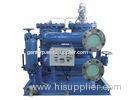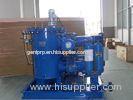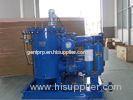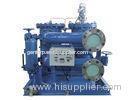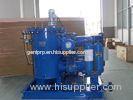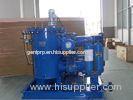|
Wuxi Kangwei Environment And Energy Equipment Co., Ltd
|
Marine Diesel Oil Filtration System
| Place of Origin: | Zhejiang, China (Mainland) |
|
|
|
| Add to My Favorites | |
| HiSupplier Escrow |
Product Detail
Strainer and filter
Strainer and filter
automatic fuel oil filter systems provides effective full-flow filtration of fuel oil (FO), heavy fuel oil (HFO) and marine diesel oils (MDO) up to 700 cSt/50°C. These fuels are widely used in modern two-stroke and four-stroke diesel engines, and the quality and cleanliness of such fuel has an important influence on engine efficiency, fuel consumption, reliability and service life.
This range of automatic fuel oil filter systems only requires very limited investment yet helps ensure reliable engine operation, along with peace of mind for those dependent on the engine working as intended. The robust, space-saving design makes these units easy to install as well as to retrofit as upgrades to existing installations.
These units use fuel oil that has already been filtered to backflush the filters, doing away with any need for a compressed air supply. This backflushed oil is then cleaned by refiltration in a special filter-equipped diversion chamber (which also uses the same backflushing principle) before being recirculated into the system. This diversion chamber acts as an automatic maintenance-free sludge treatment system, collecting and concentrating the particles backflushed from the full-flow chamber and the subsequent cleaning process into a concentrate sludge.
Description:
1. Filtration
The fluid to be filtered flows through the
filter elements of the back-flushing filter,
passing from the inside to the outside.
Contamination particles then collect
on the inside of the filter elements.
As the level of contamination increases,
the differential pressure between
the contaminated and clean sides
of the filter increases.
When the differential pressure
reaches the pre-set trigger point,
back-flushing starts automatically.
Triggering back-flushing
Automatic back-flushing is triggered:
– When the differential pressure
trigger point is exceeded,
– By means of an adjustable timer
– By pressing the TEST button.
2. Back-flushing
- The gear motor rotates the flushing arm
under the filter elements and ensures
the contamination is discharged
– The contamination is flushed away
through the open back-flushing valve
The pressure drop between filtrate side
and back - flushing line flushes a small
amount of the filtrate back through
the contaminated filter elements.
The contamination particles collected
on the inside of the filter elements
are loosened and flushed into the
backflushing line via the flushing arm.
After the "back-flushing time per element"
has expired, or after one revolution
(EU version), the back-flushing valve
is closed. In this way, all the filter elements
are back-flushed, one after the other.
A back-flushing cycle is terminated once
all filter elements have been cleaned.
3. Pulse - aided
back-flushing
On the control types EPT and PT,
the flushing arm remains under the filter
element for only a few seconds.
Rapid opening of the pneumatic
back-flushing valve generates a pressure
surge in the filter element openings,
and supplements the cleaning effect
of the back-flushing process.
The back-flushing valve opens and
closes during back-flushing of each
filter element (back-flushing volumes
are lower in pulse-aided control).



